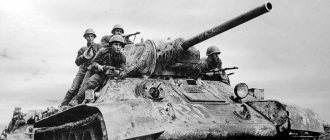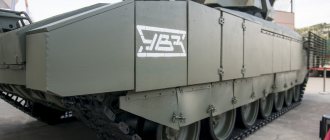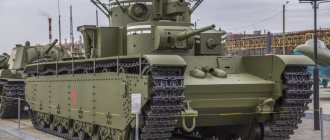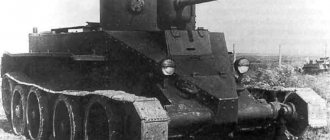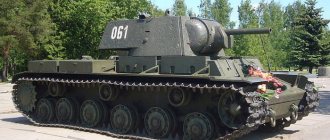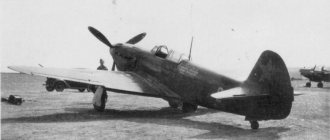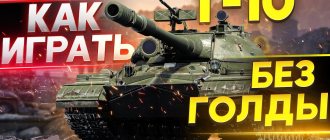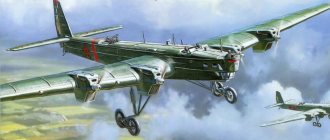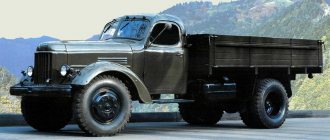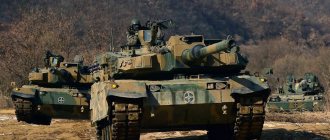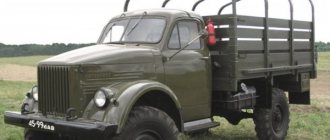The history of the T-34
The first tanks in Russia began to be developed in pre-revolutionary times. The ancestor of the first Russian car was the French captured tank Renault FT-17. Tank building dates back to 1914 with the creation of an armored vehicle on a wheeled-tracked "All-terrain vehicle". Later, other prototypes appeared, but the shortcomings of their design did not yet allow them to carry out combat missions.
photo: format72.ru French tank Renault FT-17
In 1919, the USSR again took up the creation of combat vehicles, but now the developments of Western, in particular French and English designers, were taken as a basis.
Model A-32
Let's return to Koshkin. Of course, he relied on both the work of Firsov and the work of Dick. As, in fact, the entire world experience of tank building. However, he had his own vision of the tank of the future.
Koshkin wanted to create a high-speed vehicle with high cross-country ability, withstand artillery fire and have significant striking power.
Along with the wheeled-tracked model A-20, the designer is developing a tracked model A-32. Together with Koshkin, his like-minded people are working, who will subsequently continue his work - Alexander Morozov , Nikolai Kucherenko and engine designer Yuri Maksarev .
At the Supreme Military Council in Moscow, where projects of both the wheeled-tracked A-20 and the tracked A-32 were presented, the military was frankly not delighted with the “amateur performance” of the designers. Stalin intervened - let the Kharkov plant build and test both models. Koshkin’s ideas received the right to life.
The designer was in a hurry. He understood that a big war was on the doorstep. The first samples of tanks were ready and entered testing in the fall of 1939, when World War II had already begun. Experts recognized that both the A-20 and A-32 are better than all models previously produced in the USSR. But no final decision was made.
Pre-war tanks produced by plant No. 183. From left to right: A-8 (BT-7M), A-20, T-34 model 1940 with an L-11 cannon, T-34 model 1941 with an F-34 cannon. Photo: Commons.wikimedia.org
Tank T-24 and BT
In the 20s and 30s, tank building, as an advanced industry, was overflowing with ideas and new design solutions. This is the period of creation of the T-24 with 45 mm. gun, a series of light BT tanks with good maneuverability and speed. However, they all had a number of significant drawbacks. These include a gasoline engine, which entails a high risk of fire when hit by a projectile, as well as high production costs.
Medium Soviet tank T-24
The Spanish Civil War (1936-1939) became for the young USSR a kind of testing ground for new types of weapons, including tanks.
In May 1938, Joseph Vissarionovich Stalin invited engineers and tank crews who had visited the battlefields in Spain. They were faced with the question of what kind of modernization the tanks needed. During the discussions, it was decided to create a fully tracked vehicle. Before this, the vehicles used tracked wheels.
Firsov and Dick
After graduating from university, the “young specialist,” who is already 36, works in Leningrad, and his abilities begin to unfold. He quickly makes his way from an ordinary designer to deputy head of the design bureau. Koshkin participated in the creation of the T-29 tank and an experimental model of the T-111 medium tank, for which he was awarded the Order of the Red Star.
In December 1936, Mikhail Koshkin was sent to Kharkov as head of the tank design bureau of plant No. 183.
Afanasy Firsov. Photo: Commons.wikimedia.org
Koshkin’s appointment to the position took place under rather tragic circumstances - the former head of the design bureau Afanasy Firsov and a number of other designers came under investigation for sabotage after the BT-7 tanks produced by the plant began to fail en masse.
Firsov, who managed to transfer the cases to Koshkin before his arrest, will be shot in 1937. Conspiracy theorists will later call him the real “father” of the T-34.
Under the leadership of Koshkin, the BT-7 tank was modernized, which was equipped with a new engine. And in the fall of 1937, the Automotive and Tank Directorate of the Red Army gave the Kharkov plant the task of developing a new wheeled-tracked tank.
Designer Adolf Dick works at the plant in Kharkov at the same time as Koshkin . According to one version, it was he who developed the design of a tank called A-20, which met the requirements of the technical specifications. But the project was ready later than planned, after which Dick received the same charges as Firsov and ended up in prison. But Dick was lucky - unlike Firsov, he escaped execution, spent many years in exile, then returned to work as a designer. Adolf Yakovlevich lived until the end of the 1970s.
Legend in armor. The history of the best tank of World War II Read more
Designer M.I. Koshkin, creator of the T-34 tank
However, without the direct control of the Supreme Commander-in-Chief, back in October 1937, on the territory of the Kharkov Locomotive Plant, the head of the design bureau, Mikhail Ilyich Koshkin, together with A. A. Morozov and N. A. Kucherenko, began creating a new tank, without relying on Western analogues designers. The combat vehicle was based on a diesel engine. Thick armor plates, 4-7 cm thick, were positioned at a steep angle of 60⁰ so that enemy shells, in the event of a frontal attack, would ricochet off the hull. The 76 mm cannon had a firing range of up to 1 km.
Mikhail Ilyich Koshkin, chief designer of the T-34 tank
In March 1940, 2 prototypes of the new tank made a run from Kharkov to Moscow. The road led around the cities along country roads. The goal was not only to bring samples of tanks to the authorities, but also to test combat vehicles. The task was of paramount importance; the head of the design bureau, M.I. Koshkin, volunteered to lead one of the tanks himself.
The vehicles were delivered to Moscow on time, the tanks were given a comprehensive study, and mass production of the new T-34 combat vehicle began at the beginning of 1941. Unfortunately, driving the tank along the route Kharkov - Moscow had a negative impact on the health of its inventor, and in September 1940, M. I. Koshkin died of pneumonia.
An important reason for the transition to new tanks was the results of the war with Finland (1939-1940). It was she who showed the shortcomings of existing machines. Light tanks BT-5 and BT-7, as well as T-26 tanks with a gasoline engine, successfully won both tank battles that took place during this war. However, hundreds of tanks simply froze without entering the battle.
Light tank BT-5
The attack of Nazi Germany on June 22, 1941 took the tank units by surprise. Many cars were burned right on the platforms. Those that remained could not give a worthy rebuff: there were not enough shells, there was no one to lead the new vehicles into battle, and the tankers were not trained to operate the new vehicles. Thus, out of about a thousand tanks defending the western borders of the country, almost all were lost in the first two weeks of fighting. And in the fall of 1941, the Kharkov Locomotive Plant, which produced the bulk of the T-34, was destroyed.
"The Sweet Life" of a Peasant Son
Nothing said that Mikhail Koshkin could become a designer of armored vehicles. He was born on December 3, 1898 into a peasant family in the village of Brynchagi, Uglich district, Yaroslavl province. The boy was not even seven when his father died after overstraining himself while logging. The mother was left with three young children in her arms, and Mikhail had to think not about studying, but about earning a piece of bread.
At the age of 14 he went to work in Moscow. Koshkin was accepted as an apprentice in the caramel shop of the confectionery factory, which would later be called “Red October”.
Article on the topic
A genius from a candy store. The designer of the T-34 did not live to see the triumph of his brainchild
T-34 in the Great Patriotic War
Having recovered from the first shock, the army of the Soviet Union begins retaliatory military operations. Formed tank divisions enter the battle. And here the advantages of the new T-34 become a big problem for the enemy. T-34 cannons penetrate the armor of any German tank at a kilometer distance - not a single one of the vehicles in the fascist arsenal can resist this. In view of this, it was decided to postpone the attack on the city of Tula planned by the Germans for the fall.
The losses of USSR combat vehicles since the beginning of the war have been enormous. Thus, in 1941, the Soviet Union lost about 20.5 thousand tanks of all types. To make up for the lack of combat vehicles, factories moved to the Urals and Siberia are urgently producing new tanks, the bulk of which are T-34s. During the production process, another advantage of the 34th appeared - the simplicity of the design of the new equipment. Many production operations could be performed by low-skilled workers without special knowledge. This was very important, because the main workforce after workers left for the front were women and children.
KV-2 legendary Soviet heavy assault tank
The winter of 1941-1942 was marked by fierce battles for Moscow. The Germans brought about 650 tanks against Rokossovsky's army. However, the defenders turned the tide of the battle - they not only prevented the enemy from approaching the capital, but also launched a counter-offensive. In January 1942, the unfolding Red Army offensive could have changed the course of the war: it was planned to capture the main Army Group Center, which would have allowed the war to end much earlier. But there were still not enough tanks for such a strike, and the chance was missed.
The year 1942 was marked by the restoration of the power of tank forces. Factories are increasing production, and for the first time, in-line production of the T-34 has been established. A major achievement was the development of an automatic electric welding method, thanks to which the production of tanks increases 5 times without compromising quality. Field tests have shown that the seams welded with new electric welding equipment are stronger than even tank armor.
In 1942, there were already 20 tank corps. Now tanks play an important role in military confrontation. If in the early 40s they were assigned the role of only accompanying infantry, now they are an independent force. The battles showed that Soviet tanks were superior to enemy combat vehicles. As evidence, in battles on the outskirts of Stalingrad 200 km away. to the city, T-34s defeated the tank corps of the commander of the Don army, Manstein.
Nazi tank "Royal Tiger": superweapon or supermyth? |
German designers, having studied the advantages of the T-34, are producing new types of tanks. The Tiger and Panther combat vehicles received new armor and a firing range of about 1.5-2 km. The Ferdinand self-propelled artillery mount had an 88 mm cannon and 20 cm armor. It was with these machines that the Germans planned to win the Battle of Kursk and launch a counteroffensive after the failure at Stalingrad.
Battle of Kursk
The largest tank battle in the history of World War II is the Battle of Kursk. About 8,000 tanks took part in the battle; the battle area was 150x200 km, most of which was previously occupied by fertile fields. The encirclement and capture of half a million Soviet soldiers near the city of Kursk was the last chance for the German command to turn the tide of the war. The extensive operation was prepared for three months; large forces of the fascist army flocked to Kursk: 780 thousand people, 10,000 guns, 2,500 tanks.
However, the Soviet army could not help but notice such regroupings and also pulled together forces, and much larger ones at that. The Soviet Union gathered about 2 million people, 25,000 guns and more than 5,000 tanks. Trenches were dug along the Kursk Bulge; more than 400 km were dug. anti-tank trenches, minefields have been prepared.
PT-SAU "Jagdtiger" - Hitler's monster suffered a colossal collapse |
On July 5, 1943, USSR artillery opened fire on German positions. Moreover, this was done exactly an hour before the start of the planned large-scale German operation. Only an hour after the planned time, having recovered from the unexpected attack, the German tank forces moved forward.
Contrary to the expectations of the Germans, the breakthrough failed, and the offensive met desperate resistance. By the end of the day, in the southern part of the front, the German 4th Panzer Division advanced only 15 km, the 9th Division in the north - only 10 km, while suffering heavy losses. Over the course of two days, the battlefield was littered with tens of thousands of dead, hundreds of burned and dying tanks.
From July 13, when the command of the German troops decided to retreat, the Soviet army launched a counteroffensive, and actually took the initiative to wage war until May 9, 1945. It is worth noting that victory in the Battle of Kursk was more likely not a consequence of success in battle, but rather the presence of significant large reserve forces. If you compare losses on both sides, it is easy to see that German military units suffered less than Soviet ones. Thus, losses on the part of the USSR amounted to:
- killed, captured, missing – more than 250 thousand people;
- wounded - more than 600 thousand soldiers and officers;
- losses of tanks and self-propelled guns - 6,064 units.
From the German side these figures look like this:
- killed, missing – more than 100 thousand people;
- wounded - 433,933 soldiers and officers,
- losses of tanks and self-propelled guns - 2,900 units.
German tanks "Tiger" and "Ferdinand"
The main Soviet tank in the Battle of Kursk was the T-34; on the German side, Tigers and Panthers, as well as Ferdinand self-propelled gun mounts, entered the battle.
The new tanks had a number of advantages. The Tiger had armor 10 cm thick and was practically invulnerable.
Destroyed Ferdinand self-propelled artillery installations on the Kursk Bulge
The advantage of the new tanks of Nazi Germany became obvious. The tankers said that with the Tigers and Panthers in the armored T-34s, they felt as if they were naked. The facts confirm this. If the effective firing range of the T-34 tank for the "Tiger" was 2 km, for the "Panther" 1.5 km, then the T-34 inflicted damage to the new combat vehicles from a distance of no more than 300-500 m. The only advantage in The battle of the legendary tank remained maneuverable and speedy.
The task of Soviet designers was to strengthen the armor and armor-piercing power of the T-34 while maximizing its speed characteristics. During the war, it was important that the production of a new tank did not require significant modifications to production technology, since this required a large investment of time and resources.
Cannon "Dora" railway gun of the Third Reich |
The new tank acquired a turret, inside of which there was an 85 mm cannon. caliber, instead of 76 mm, the turret had enhanced armor protection, the number of fighters in the crew increased from 4 to 5. The T-34’s armor was still inferior to the heavy Panther and Tiger tanks, but the main advantage of the vehicle compared to heavy tanks Germany retained – speed.
Tank T-34-85: modified T-34
The T-34-85 tank went into production in January 1944. New tanks were sent to all fronts of the Great Patriotic War and took part in the liberation of Ukraine, Belarus, Poland, Hungary, and Romania. The T-34-85 took part in the Berlin operation; this particular tank is called the “Victory Tank”.
After the end of the Great Patriotic War, the T-34 tank of a new modification participated in the Soviet-Japanese War and was in fact the main combat vehicle of the army until the mid-50s. It was in service until 1993, and gradually more modern vehicles began to replace it.
As for other countries, the T-34 was in service with more than 40 countries during the 20th century. Tanks took part in the Korean and Vietnam Wars, and in numerous armed clashes in the Middle East.
Soviet career
In 1917 he was drafted into the army. As part of the 58th Infantry Regiment, Koshkin fought at the front and was wounded. By the time he regained his health, demobilization of the old tsarist army had begun, and Mikhail took off his military uniform.
True, not for long - in April 1918 he volunteered to join the Red Army. In its ranks, Koshkin fought near Tsaritsyn, near Arkhangelsk, and fought with Wrangel’s army.
After several wounds and typhus, his military career ended. But they saw the potential of a leader in Koshkin, so he was sent to Moscow, to the Sverdlov Communist University.
After graduating from university in 1924, Mikhail Koshkin became the director of a confectionery factory in Vyatka. There he began to move along the party line, by 1929 becoming the head of the propaganda department of the Provincial Committee of the All-Union Communist Party of Bolsheviks.
